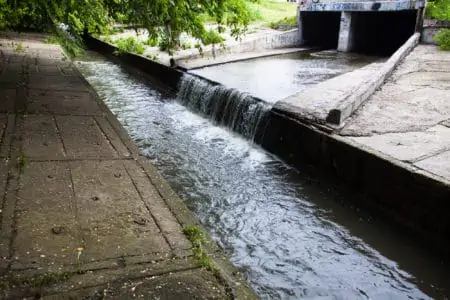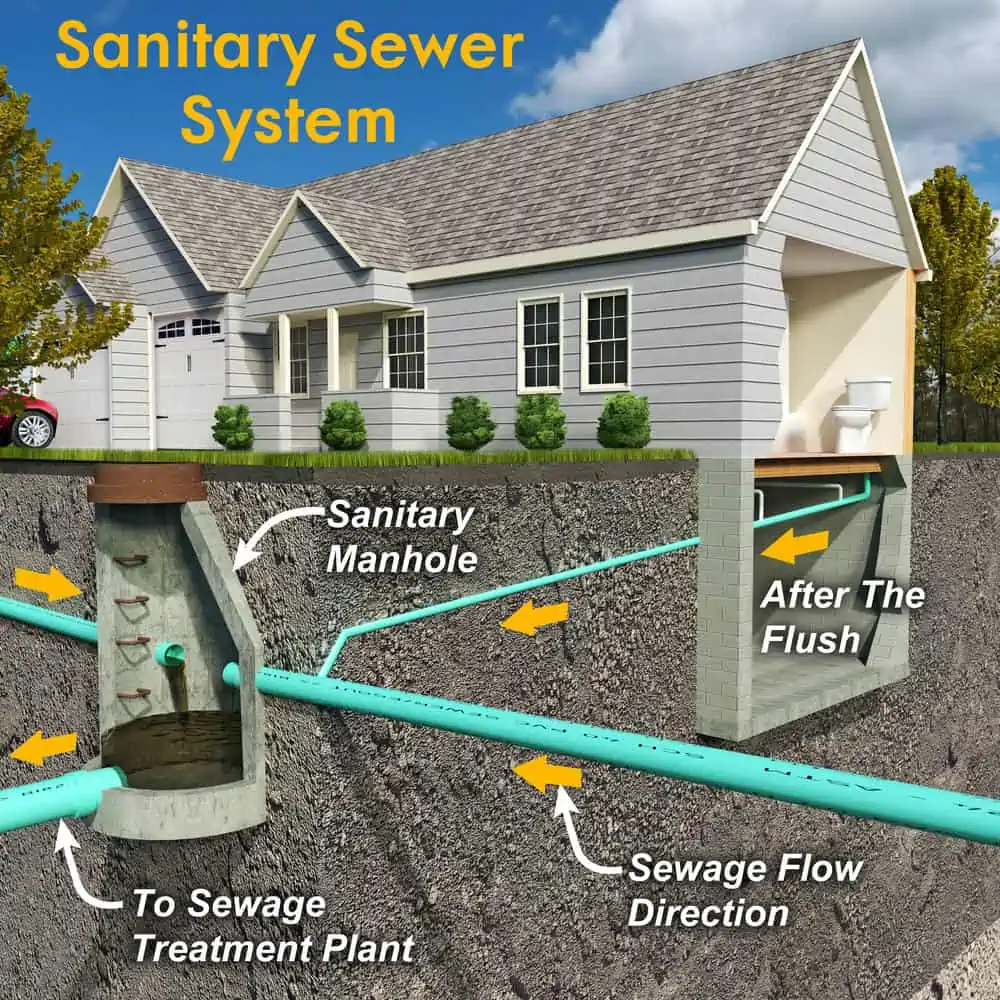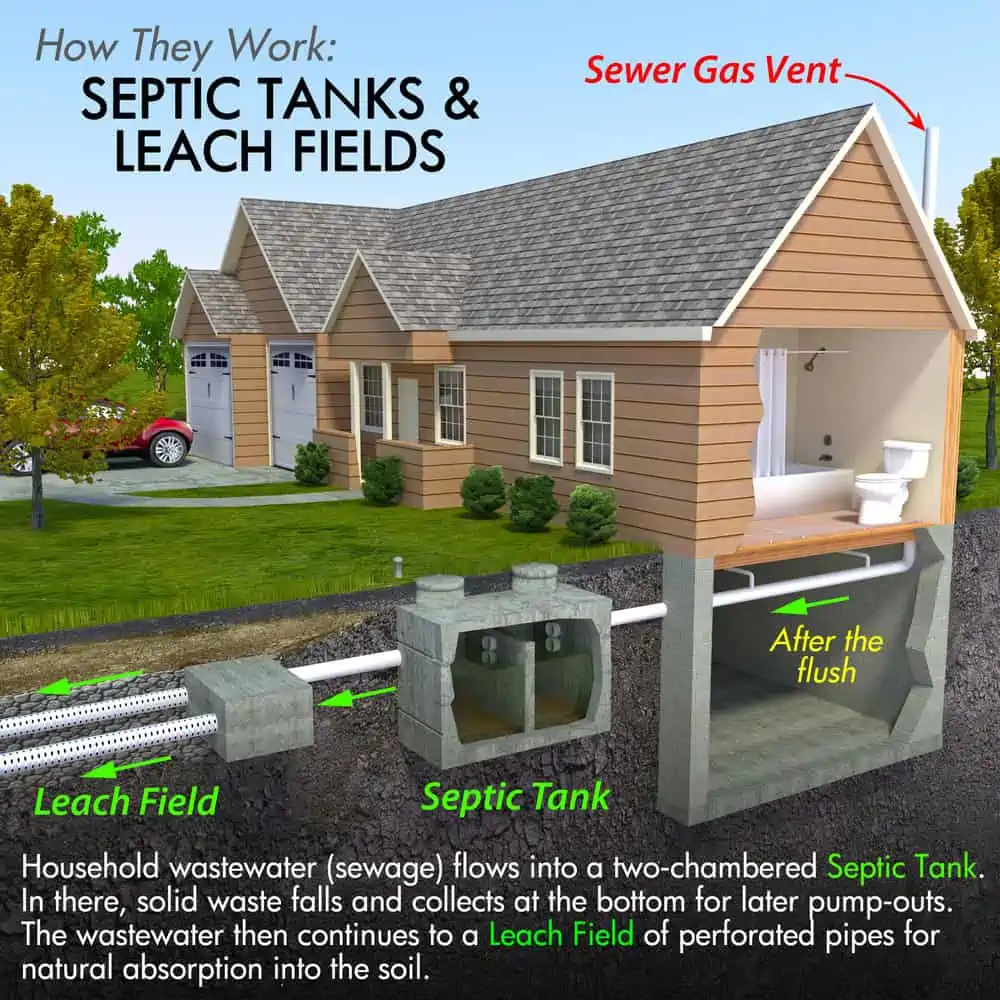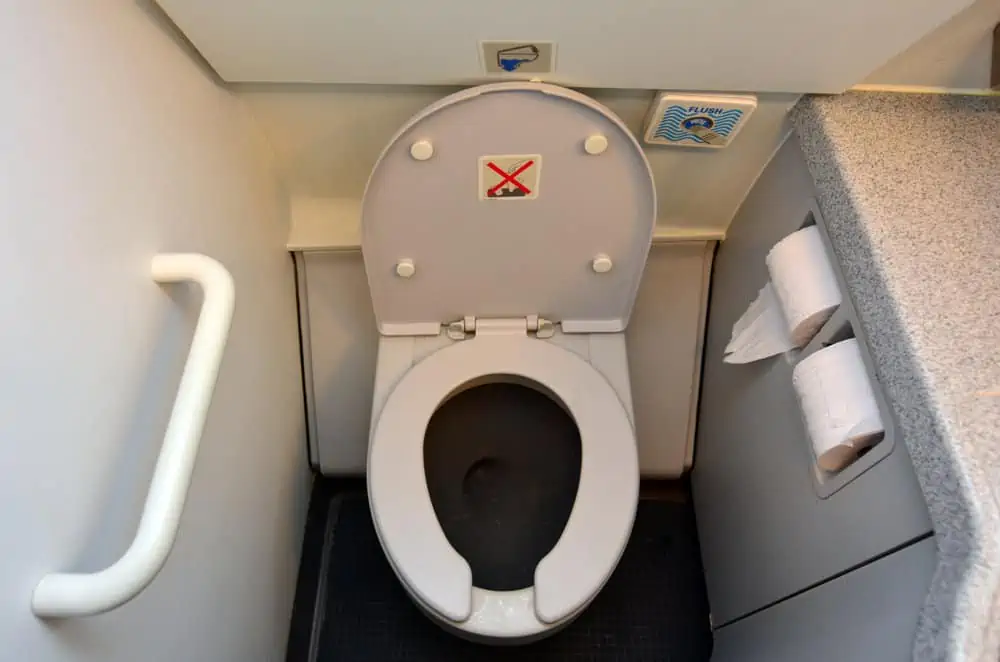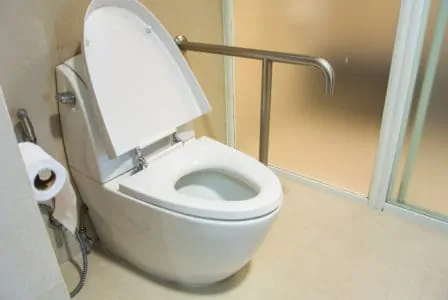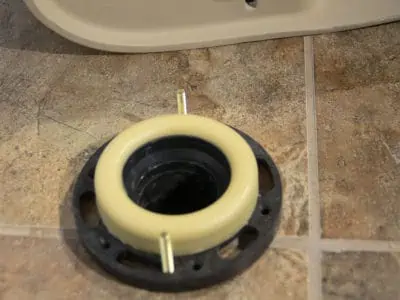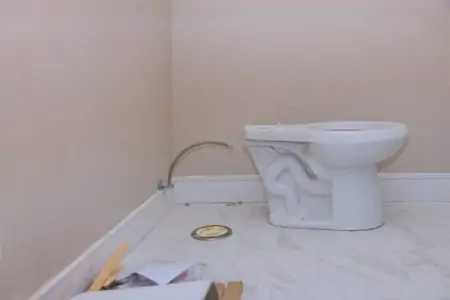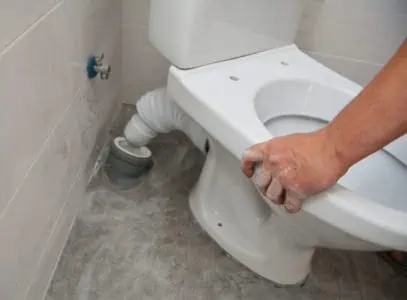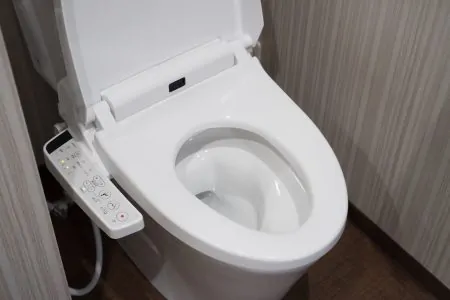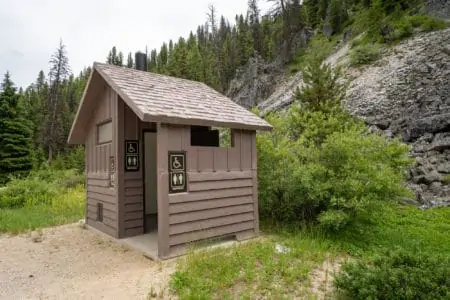Did you know that toilet water can be filtered up to a point where it’s safe to drink? Out of everything inside your bathroom, toilet water has probably one of the most fascinating journeys.
So, where does toilet water go? We’ll take you through the process.
Key Takeaways
- Toilet water goes through a treatment process, either in a modern sewer system or a septic system, to become safe for reuse or release into the environment.
- The treatment process includes adding chemicals, initial treatment, aeration, eliminating sludge, and filtering & disinfecting.
- Recycled toilet water can be cleaner than tap water and is used for various purposes, including irrigation and drinking water.
- Only flush normal toilet paper to avoid clogging and damaging the plumbing system. Do not flush items like facial tissues, plastics, wet wipes, and hair.
Where Does Toilet Water Go?
If “where does the sewage go?” is the burning question keeping you up at night, keep reading. What happens after you flush and what happens to water when it goes down the drain depends on whether or not you have a septic tank at home.
In a Sewer System
Before it can be reintroduced into the ground or recycled for use in agriculture, fisheries, or irrigation, toilet water from your house needs to be purified through a treatment process first.
1. Adding Chemicals
Before beginning the treatment process, chemicals are required to suppress the smell caused by the sewer water. Some treatment plants also use misting systems that include deodorizing agents to keep the smell of the sewage under control.
The treatment process for wastewater involves passing it through large sieves to separate bigger solids from the sewage. This helps remove items that have no place in toilet water, from diapers to baby wipes.
2. Initial Treatment
The wastewater is transferred into enormous circular settlement tanks, where the solids will slowly settle at the bottom for some time. The materials that settle at the bottom, including human waste, are referred to as sludge.
3. Aeration
The water is agitated in rectangular tanks to release gasses. At the same time, air is pumped into the tank. This creates an atmosphere conducive to the decomposition of tiny organic debris by bacteria that may not have been removed during the main treatment phase.
4. Eliminating Sludge
Next, it’s time to eliminate any leftover solid materials that have settled at the bottom of the water.
At this point, the sewage contains only a trace amount of the sludge, chemicals, and potentially harmful elements, if any at all.
5. Filtering & Disinfecting
Even though natural soil can clean tainted water before it seeps into the ground, it isn’t effective against all types of pollution.
The odors, iron, germs, and other solid contaminants in partially treated sewage are removed from the water by passing it through sand beds in a filtration system.
In the final step, chlorine is added to the water to eradicate any remaining bacteria and make it suitable for subsequent uses. This final step is necessary for wastewater that will be used for agricultural purposes, such as irrigation or land cultivation.
In a Septic System
So, where does the toilet waste go if you have a septic system?
Water treatment facilities that are underground are known as septic systems. These are usually used in rural areas with no access to centralized sewage systems.
The septic tank and the drain field, also known as the soil absorption field, are the two components that make up a standard sewage treatment system.
The liquid lying in the septic tank is discharged by the soil-based systems, traveling through underground chambers and pipes. This liquid (also known as effluent) is released slowly into the soil. The solids will eventually need to be removed by a specialist company.
In an Airplane
Because they create an active vacuum, airplane toilets are more commonly referred to as vacuum toilets. When you flush the toilet, a valve in the sewage line is opened, which creates a vacuum in the line.
This vacuum pulls the contents of the bowl into a tank below the toilet. The vacuum does most of the work, which means that these toilets don’t require much water.
Fun Fact
Aside from using about 33 percent less water than a regular toilet, aircraft toilets are more eco-friendly. They can flush in any direction, be installed anywhere, and use small diameter sewer lines.
Where Does Toilet Paper Go?
Toilet paper is made using short cellulose fibers that disintegrate easily, unraveling when submerged in water.
They condense into a fine sludge easily transported by the water flow and eventually into the sewage system.
By the time it arrives at the sewage treatment plant, most of the toilet paper has already totally broken down. It ends up in the sludge digester tanks and is eventually converted into compost.
What Happens to Sewage Water After Treatment?
Once this dirty water has been treated, it’s released back into the local waterways. Here it can be used for several things, including crop irrigation and drinking water, and can even sustain aquatic life.
Does Toilet Water Get Recycled?
Some people frown at the idea of drinking recycled toilet water, but it’s safer than you think. There is a possibility that recycled water is even cleaner than typical tap water.
There are several distinct technologies available today that can filter trash, germs, smells, and other types of contaminants.
For example, reverse osmosis uses membranes that are so permeable that only water molecules can travel through them. This process can remove salts, chlorine, calcium, and other solids.
What Can’t You Flush Down a Toilet?
To save you the trouble, pretty much the only thing you should flush is normal toilet paper. When you flush the wrong items, this could lead to a series of problems. This applies to things flushed or poured down the toilet or down the sink.
These problems range from clogging the toilet to affecting the plumbing of neighbors connected to the same municipal system.
Some of the things that you should never flush down the toilet include: facial tissues, plastics, floss, wet wipes, hair, fats, oils, etc. Also, keep in mind the following:
- Grease is best thrown in the trash or taken to a recycling center.
- Never pour motor oil down the drain because it makes water treatment less effective.
- Photographic chemicals should be disposed of in separate containers and taken to recycling centers.
FAQs
Bottom Line
Hopefully, this article answers all your questions, clarifying the most important one of all: where does toilet water go? Do your part and make sure only to flush acceptable items or waste. This will prolong the life of your toilet plumbing and makes it easier for the treatment system.
